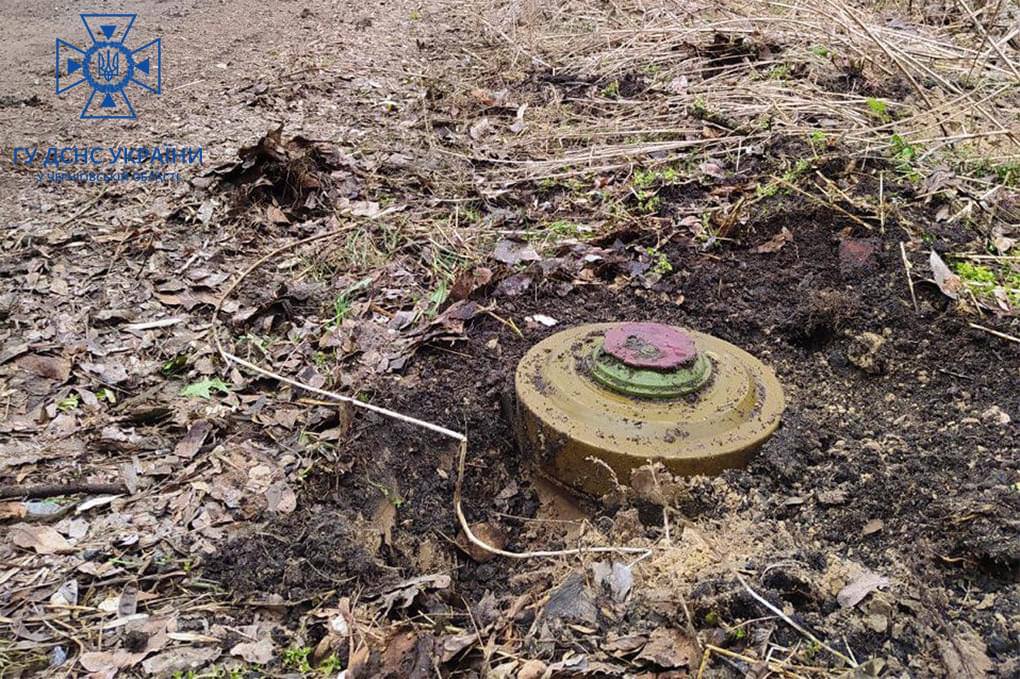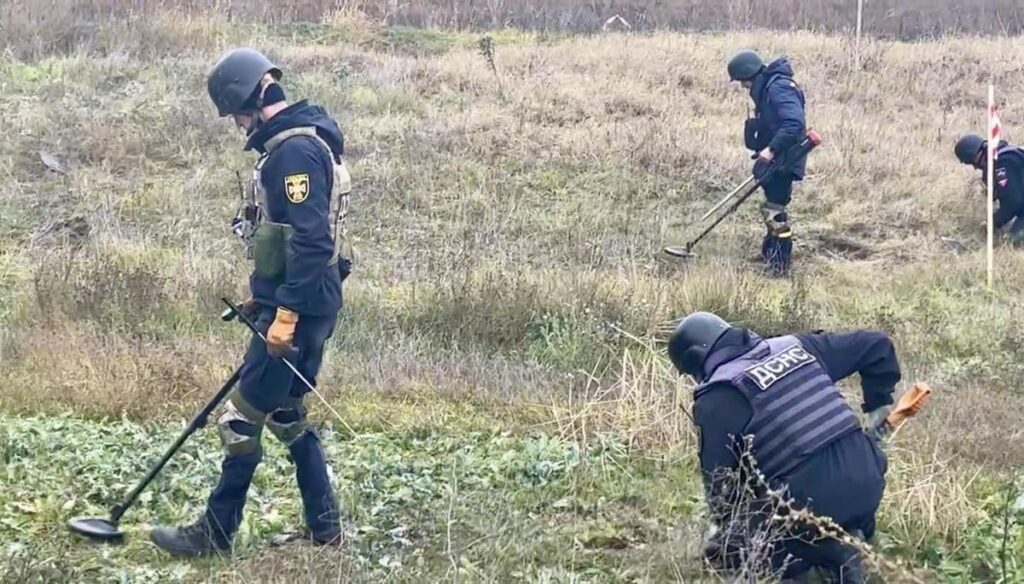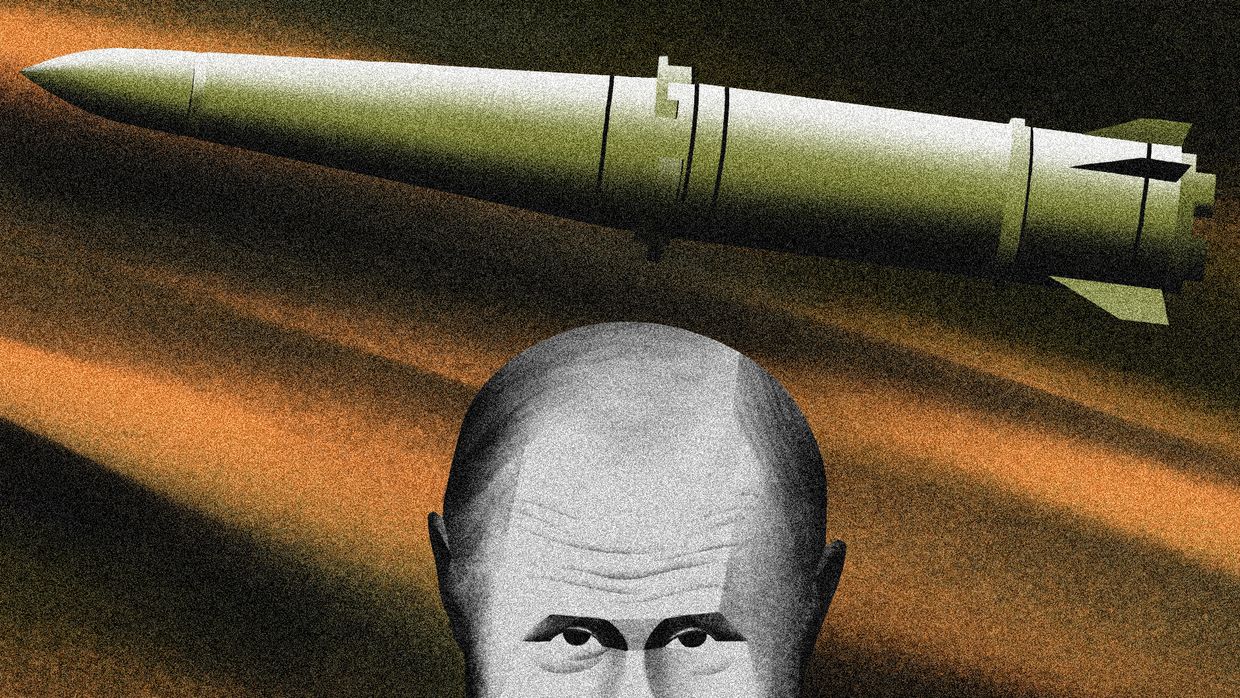Gold Miners Feared Dead in Congo After Landslide

© Reuters


© Reuters


© Tamir Kalifa for The New York Times


© Dmitry Kostyukov for The New York Times


As the cryptocurrency mining industry continues to evolve and face scrutiny over its energy consumption, the concept of “green” or renewable energy-powered mining is gaining traction. Cloud mining platforms are increasingly positioning themselves as environmentally friendlier alternatives to traditional hardware ownership. This article examines the landscape of renewable energy cloud mining in 2025, discussing the promises, the significant challenges, and the crucial factors potential investors need to consider before putting their money into such ventures.
Traditional cryptocurrency mining, particularly for Proof-of-Work coins like Bitcoin, requires substantial investment in specialized hardware (ASICs), significant electricity consumption, technical knowledge for setup and maintenance, and management of heat and noise. For most individuals, this is a high barrier to entry.
Cloud mining offers an alternative: users rent computing power from a third-party provider’s data centers, ideally located in regions with low electricity costs or favorable conditions.
The appeal is clear:
However, the cloud mining space has a well-documented history of significant risks that investors must understand:
The environmental impact of cryptocurrency mining has become a major global discussion point. The energy consumption of Proof-of-Work networks is substantial, and the source of this energy often includes fossil fuels, contributing to carbon emissions.
In response, there’s a growing push for more sustainable mining practices. Renewable energy sources like solar, wind, hydropower, and geothermal offer a way to power mining operations with a reduced carbon footprint. This has led to:
For investors concerned about the environmental impact of crypto or seeking alignment with sustainable practices, “green” cloud mining can sound like an ideal solution.

While the concept of renewable energy cloud mining is promising, verifying these claims is a major challenge for potential investors. Unlike owning your own solar panels to power a home miner, you are relying entirely on the provider’s assertions.
Key questions and challenges in verifying green cloud mining claims include:
Without transparent and verifiable data, claims of being “green” can be purely marketing tactics to attract environmentally conscious investors.
The cloud mining market includes a variety of platforms with different business models and operational histories. While specific, verifiable details on their renewable energy use are often hard to find publicly and require deep due diligence for each, we can compare some general characteristics of platforms mentioned in the broader market context:
| Platform | Model Type | Noted Establishment / Scale | Key Claimed Feature (from general info) | Note on Green Claims (Publicly Verified) |
| StormGain | Exchange-Linked | Large scale (5M+ users, 230+ countries) | Integrated trading platform | Requires independent verification |
| ECOS | Hash Rate Rental | Established (since 2017), Comprehensive suite | Intuitive platform, daily payouts | Claimed/Exploring; verification needed |
| BitFuFu | Hash Rate Rental | Rapidly growing, Focus on digital assets | Flexible mining options, professional support | Requires independent verification |
| Genesis Mining | Hash Rate Rental | Long-standing stability (one of the oldest) | Transparent contract terms | Claimed/Exploring; verification needed |
| Binance Cloud Mining | Exchange-Linked | Backed by major exchange reputation, Large user base | Uncomplicated entry point, short-term contracts | Part of Binance’s broader initiatives; verification of specific mining energy needed |
Investing in cloud mining, like investing in cryptocurrency itself, carries significant risks. When evaluating platforms, especially those making bold claims (including about being “green”), it is essential to:
The idea of renewable energy cloud mining is a positive development that could help address the environmental concerns surrounding cryptocurrency. As of 2025, more platforms are likely to feature “green” claims as part of their marketing.
However, the cloud mining sector remains a high-risk environment heavily populated by fraudulent schemes. While green energy is a desirable feature, it is critical not to let “green” claims overshadow the fundamental need for rigorous due diligence. High, fixed, or guaranteed returns, lack of transparency about operations and leadership, and absence of verifiable proof of mining activity or energy sourcing remain major red flags, regardless of any environmental assertions.
Potential investors should approach all cloud mining opportunities with extreme caution. Focus on verifying the provider’s legitimacy, operational transparency, and realistic profitability potential before considering their environmental claims. The promise of green crypto should not lead to overlooking the very real risks of losing your investment.
Q: What is green cloud mining?
A: Green cloud mining refers to cryptocurrency cloud mining services that claim to power their operations primarily or entirely using renewable energy sources like solar, wind, hydropower, or geothermal energy, aiming to reduce their carbon footprint.
Q: Are all cloud mining services that claim to use renewable energy legitimate?
A: No. The cloud mining sector has a high rate of scams. Claims of using renewable energy must be independently verified with solid evidence (like energy audits or power purchase agreements) and should not be taken at face value, especially if combined with other red flags like unrealistic promised returns.
Q: How can I verify if a cloud mining provider actually uses renewable energy?
A: Look for verifiable proof such as public third-party energy audits, detailed reports on their energy mix, information about specific data center locations that correlate with renewable sources, or Power Purchase Agreements (PPAs) with green energy providers. Be skeptical of vague or unverifiable claims.
Q: What are the biggest red flags for a cloud mining scam?
A: Major red flags include promises of high, fixed, or guaranteed daily/total returns; lack of transparency about the company’s team, location, or mining operations; aggressive referral programs promising high commissions; pressure to invest large amounts quickly; and lack of independent verification of their claims.
Q: Is it possible to make a profit from legitimate cloud mining in 2025?
A: Yes, it is possible, but profitability is variable and not guaranteed. It depends on the cryptocurrency price, mining difficulty, the cost of your contract (including all fees), and the provider’s efficiency. Many legitimate contracts may yield little to no profit, especially on shorter terms, due to these fluctuating factors.


Ukraine was a signatory to the Ottawa Treaty, banning anti-personnel mines. On 29 June 2025, it officially withdrew, citing Russia’s widespread use of banned mines like the PFM-1 across Ukrainian territory. But stepping away from the treaty won’t protect sappers from the mines already scattered by Russia. In Kherson, I spoke to a Ukrainian sapper who lost part of his foot after stepping on a Russian PFM-1 — one of thousands still buried in civilian areas.
I took a step forward to photograph the piano for her, then stopped, remembering that everything around was mined.
The Palace of Culture in Kherson looked like a torn Japanese divider—translucent sheets on a lattice frame, light filtering through squares.
On 25 September 2024, two Russian aerial-guided bombs had turned a beloved community center into a skeleton.
Photo: IRS Pivden
A grand piano loomed in the dusk. A few hours ago, my friend Alyona, in tears, showed me the video of this piano in flames—she used to play it as a little girl.
#Kherson A piano in flames in a city arts center after a Russian aerial bomb attack this morning.
— Zarina Zabrisky
A dancer I am interviewing now is heartbroken: she spent her childhood here. pic.twitter.com/7DYjFsVkCf(@ZarinaZabrisky) September 25, 2024
Like many Khersonians, Alyona survived nine months of Russian occupation, lost her house in the flood, but rarely showed emotion. Yet now, she wept.

The dark stage in the amphitheater once hosted dance recitals, chorus competitions, and rock concerts. Now, it was a minefield.
A blue-green ballet studio with broken bars and shattered mirrors was once filled with little ballerinas in pink tutus. Now, it was infested with banned anti-infantry mines with the deceptively beautiful name—”Petals.”
Walking through the remains of the Palace of Culture was not just soul-crushing and glass-crashing. It was deadly.
The Russian military remotely mined Kherson. To clear it, an EOD team had to clear the site.
I stepped outside and heard the drone buzzing. Russian killer drones swept back and forth, like angry wasps. They dropped grenades, homemade explosives, incendiary devices, and “Petals.”
I ducked under a tree to wait for the drone to fly toward the Dnipro River, back to the Russian pilot’s nest on the occupied bank.
— Zarina Zabrisky
#Kherson #DroneAttacks and aerial bombs.
Reporting from the bombed arts center—had a close call at the end, taking cover under a tree from a Russian drone.
At least 6 injured by #DroneAttacks today.
Right now, Kherson suburbs are attacked by aerial bombs. pic.twitter.com/68CiQEEYB2(@ZarinaZabrisky) September 25, 2024
In an hour, a message flashed on my phone: an EOD lost his foot demining the site. Volodymyr Perepylytsia, head of explosive services for the National Police in Kherson Oblast, spoke to me before, telling me PFM-1 anti-personnel mines, “look like fallen leaves. If you step on them, you lose a limb.”
He was now at the hospital, in need of a blood transfusion.

How hard is EOD in Kherson? On a scale of 0 to 100, Volodymyr gives it a thousand. Still, he and his team keep going.

A few months later, Volodymyr is back to demining, and I speak to him about that day.
Hunted by a Russian drone, he also had to hide under the tree. He knew that it could be mined, and, of two evils, he chose the lesser one.
Trained to provide first aid, he applied the tourniquet to himself while he waited for the team to rescue him.
Russian drones continued to patrol the sky over the Palace of Culture, aiming for the “double tap” to attack the first responders.
“I was thinking about my wife, my son, my loved ones. It helped,” said Volodymyr.
“And now? I lost my foot, but I can still do my job. I don’t see my life outside of service, outside of defending my country. I volunteered to serve in the Armed Forces of Ukraine in 2014, when the war began. As long as I can walk, breathe, and talk, I will be in the defense forces.”
Since September 2024, the situation has deteriorated. Russian forces are not just laying mines remotely—they are turning mine clearance into a trap.
Once sappers arrive to demine, they are targeted by drones and artillery. Civilians passing through are also hit. EOD teams face the possibility of being struck mid-defusal, with unstable explosives literally in their hands.
Russian forces continue to evolve their tactics, said Volodymyr. Munitions and drones are now fitted with motion and seismic sensors, touch activation, and remote radio signals. No two devices are the same. Remote-controlled explosive devices (RCEDs) present a growing concern.

Drones deliver munitions embedded with radio-controlled detonators. These devices may fall or land, then explode, activated by a remote trigger.
Ukrainian EOD teams continue operating under direct fire and risking their lives to clear explosives in civilian areas, but the accident forced the sappers to rethink safety.
“What’s more important: demining or the EOD life? Should the operation proceed urgently, or can it wait?” said Volodymyr.
The decision to enter a location no longer depends solely on the presence of mines or explosive hazards—it hinges on real-time evaluation of Russian drone activity.
Before deployment, teams assess the drone threat level. If there are red flags, operations may be delayed or aborted.
When civilians report suspicious items in parks, yards, or homes, EOD’s responses are calculated. If a drone carrying a 5–6 kg payload is active in the area, demining may be postponed.
The immediate response could destroy nearby homes and kill civilians. Residents often understand the risk and agree to wait.
Along the Dnipro River, demining efforts mean near-certain death due to multiple threats, such as mines underfoot, the presence of aerial bombs, and strike drones above.
“It is an art,” Volodymyr says.

Another EOD won’t give his call names for the interview: the EODs are on the Russian military top priority hit list. Athletic, tall, face calm, my interlocutor goes by “Sapper.”
“It’s like a game, full of surprises, thrills, and traps,” he says. “I love it. The challenges. The rush of adrenaline.”
His eyes are glittering with excitement, and he sounds like a theater director staging an avant-garde play. He echoes Volodymyr’s point,
“A lot of it is art. The art of improvisation. And a lot of it is psychology: To be successful, an EOD expert must think like the adversary. What could be mined? What is it?”
“Our task is to disarm bombs—and not blow up in the process,” a Kherson sapper told me in an interview. “Watch The Hurt Locker to understand about sappers.”
The Hollywood film showed an EOD operator in full gear with a squad backing him up. In Ukraine and in the Kherson region of southern Ukraine, sapper work might look less sci-fi—but the same level of nerve, precision, and trust is a must.
The Sapper lights a cigarette and shows me the lighter, then points at my power bank and my cell phone.
“Could be any of this. Or—is it your laptop? A discarded Sprite can?” he says.
“Improvised Explosive Devices (IED) could be hidden in rubble and then detonated as booby-traps or remotely, by phone. Good EODs recognize each other by their signature style. We can identify the distinctive traits of the explosives maker. Like serial killers, each ordnance maker has his own signature style, rituals, and habits. You read wires’ length and attachments.”
The Kherson EOD team, for instance, knows there are four instructors training Russians on the other side of the river. Their students adopt their signature style, with slight modifications.

–How do you learn to be an EOD?
–I started as a teenager. Basic knowledge, a good teacher, and plenty of experience are essential. Many learn from the Internet, but you have to be careful as it is a minefield of its own, full of traps, with many misleading YouTube manuals for making explosives.
–How does your typical day go?
–A phone call from the residents. A drone attack. I need to drive to the location, but it is not straightforward. Often, another Russian drone follows me or waits for me there. I carry a Kalashnikov to shoot it down. A hunter rifle would be better, as it fires with a spread of pebbles, but it’s $300. I can’t afford that. Both AK and hunter rifle shoot only as far as 75 meters. Drones fly at 120 meters above the ground. If it flies lower—around 30 meters—it is a kamikaze drone. Means an imminent attack.

With drone attacks intensifying, EOD experts in Kherson must possess extraordinary combat stress resistance. Since spring 2024, Russian drones have targeted the coastal areas and suburbs of Kherson, and by May 2025, they’ve reached the city’s central and previously considered “safe” districts.
Mavic drones can cover distances of up to 15 km, carrying up to 600 grams, while FPV drones can travel up to 19 km, depending on their load, with the capacity to carry up to 4 kg of explosives.
Both types often carry retransmitter devices, which extend their range or help bypass obstacles like terrain or interference. The larger the battery, the further the drone can fly, but it sacrifices explosive payload.

Once the Sapper manages to arrive at the site, he needs to determine whether the suspect device—an FPV drone or explosives—had detonated. He needs to think critically and confront the issue before it becomes uncontrollable. The Russians disguise ordnance as home appliances and trash.
If the device did not detonate, the Sapper’s task is to neutralize the ordnance. If it did, he often has to sift through the rubble and body parts to establish what kind of drone and ordnance were used.
“You must have high combat stress resistance,” says the Sapper. “Seeing dozens of killed children is not good for your mental health.”
This deadly expertise comes at a price. Chris “Swampy” Garrett, a British Explosive Ordnance Disposal (EOD) expert, was killed on 6 May 2025 during a demining mission near Izium.
In Ukraine since 2014, Swampy joined the Azov Regiment as an instructor and co-founded Prevail Together, a nonprofit focused on mine clearance, medical aid, and risk education. His death underscores the daily risks faced by Ukraine’s sappers—technicians tasked with disarming mines and unexploded ordnance.

Mavic drones are primarily used for reconnaissance but occasionally drop fragmentation grenades (VOGs), which cause shrapnel injuries, mostly to limbs, but rarely fatal.

FPV drones, however, are used as kamikaze drones or to drop explosives, including both industrially manufactured munitions and improvised incendiary devices (IIDs), often resembling “collars on dogs.”
In addition to standard munitions, the Russian military deploys incendiary devices, such as napalm mixtures produced during the Soviet era. IIDs with such mixtures explode on impact, igniting fires.
Soviet-made K51 chemical grenades with toxic substances have been dropped in Antonivka, causing respiratory burns. The most lethal of these are the fragmentation munitions.
There are also innovative devices, like magnetic target sensors that detonate when metal comes close. If civilians attempt to dispose of ordnance with a spade, these devices can trigger an explosion. Such munitions can be disguised as household items or waste, like a can of Sprite found in Antonivka.
Additionally, grenades from underbarrel grenade launchers are sometimes converted into mini aerial bombs. Each new improvised explosive device presents a unique puzzle—and an ever-deadlier risk. With AI now being incorporated, the challenges for EOD experts in Ukraine continue to evolve.

Hi, I’m Zarina, a frontline reporter for Euromaidan Press and the author of this piece. We aim to shed light on some of the world’s most important yet underreported stories. Help us make more articles like this by becoming a Euromaidan Press patron.
The threat now also includes sabotage and suicide-style attacks. A new tactic has emerged, with Russian special forces recruiting or coercing Ukrainian civilians into becoming saboteurs. Explosives are hidden in bags or parcels and left in public areas. In some cases, individuals detonate themselves, knowingly or unknowingly.
Ukraine’s withdrawal from the Ottawa Convention puts it in company with Finland, Poland, Estonia, Latvia, and Lithuania—all countries that have either withdrawn or announced their intention to do so since Russia’s invasion began.
These nations, facing direct threats from a neighbor unconstrained by humanitarian law, have chosen military necessity over international idealism.
Still, the sappers keep going. They rely on shared knowledge, sharp instincts, and their love of the work. As Volodymyr puts it, knowing the scale of danger he faces every day: “My motivation is victory in the war against the invader.”


Italy has pledged 1.5 million euros (approximately $1.6 million) to support humanitarian demining efforts in Ukraine, deepening its partnership with the United Nations Development Programme (UNDP) and the Ukrainian government.
The agreement was formalized during a high-level ceremony in Kyiv on June 23 attended by Italian Ambassador Carlo Formosa, UN Assistant Secretary-General and new UNDP Administrator Haoliang Xu, Jaco Cilliers, Resident Representative of the UNDP in Ukraine, and Ukraine’s First Deputy Prime Minister and Economy Minister Yuliia Svyrydenko.
"Demining is not just a technical operation; it is a deeply humanitarian act that combines cooperation and innovation to restore hope in Ukraine," Ambassador Formosa said. "This project is not only a response to the emergency — it’s a step toward recovery. It’s about returning land to farmers, playgrounds to children, and safe roads to families."
The funding will support UNDP’s mine action program, which focuses on clearing land contaminated by mines and explosive remnants of war, ensuring the safe return of land to Ukrainian communities.
The initiative comes as Ukraine continues to grapple with one of the world’s largest demining challenges. According to the State Emergency Service, the total area of potentially mined land has been reduced by over 20% since late 2022. However, approximately 137,000 square kilometers (52,900 square miles) — much of it farmland — remain contaminated. Demining operations are carried out by the emergency service personnel, National Police, Ministry of Defense, and non-governmental organizations.
Currently, 112 certified demining operators, including eight international groups, are active in Ukraine, the State Emergency Service reported on June 24. Their combined capacity includes more than 9,000 personnel, 278 specialized vehicles, and over 13,000 metal detectors.
While significant progress has been made, Ukrainian officials stress that continued international support and funding are critical to accelerating clearance efforts.
 The Kyiv IndependentAlisa Yurchenko
The Kyiv IndependentAlisa Yurchenko